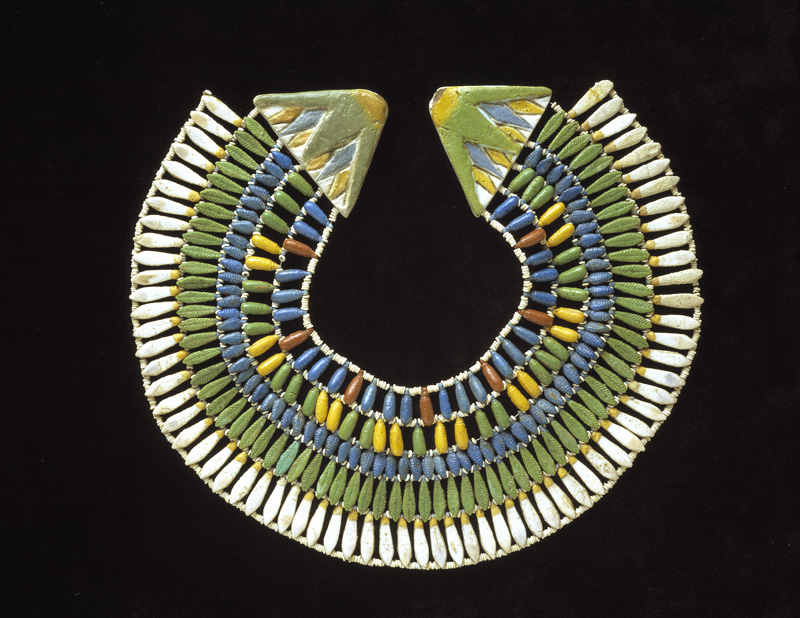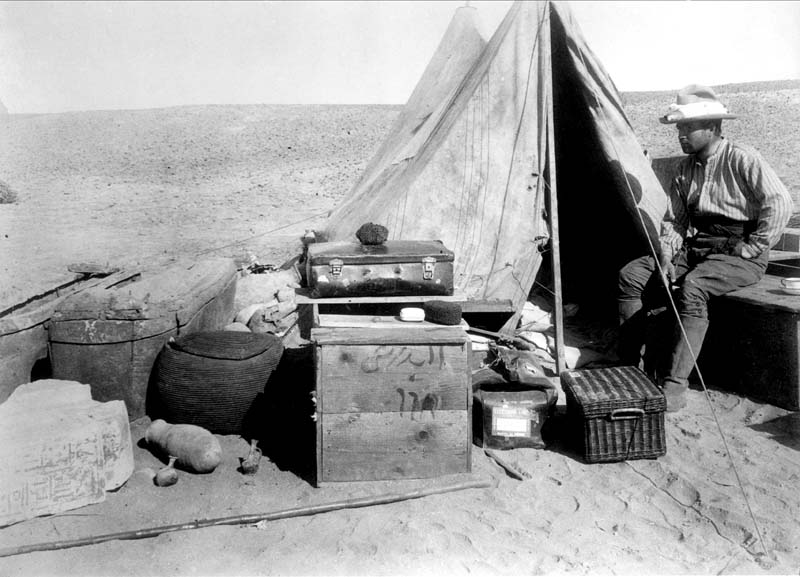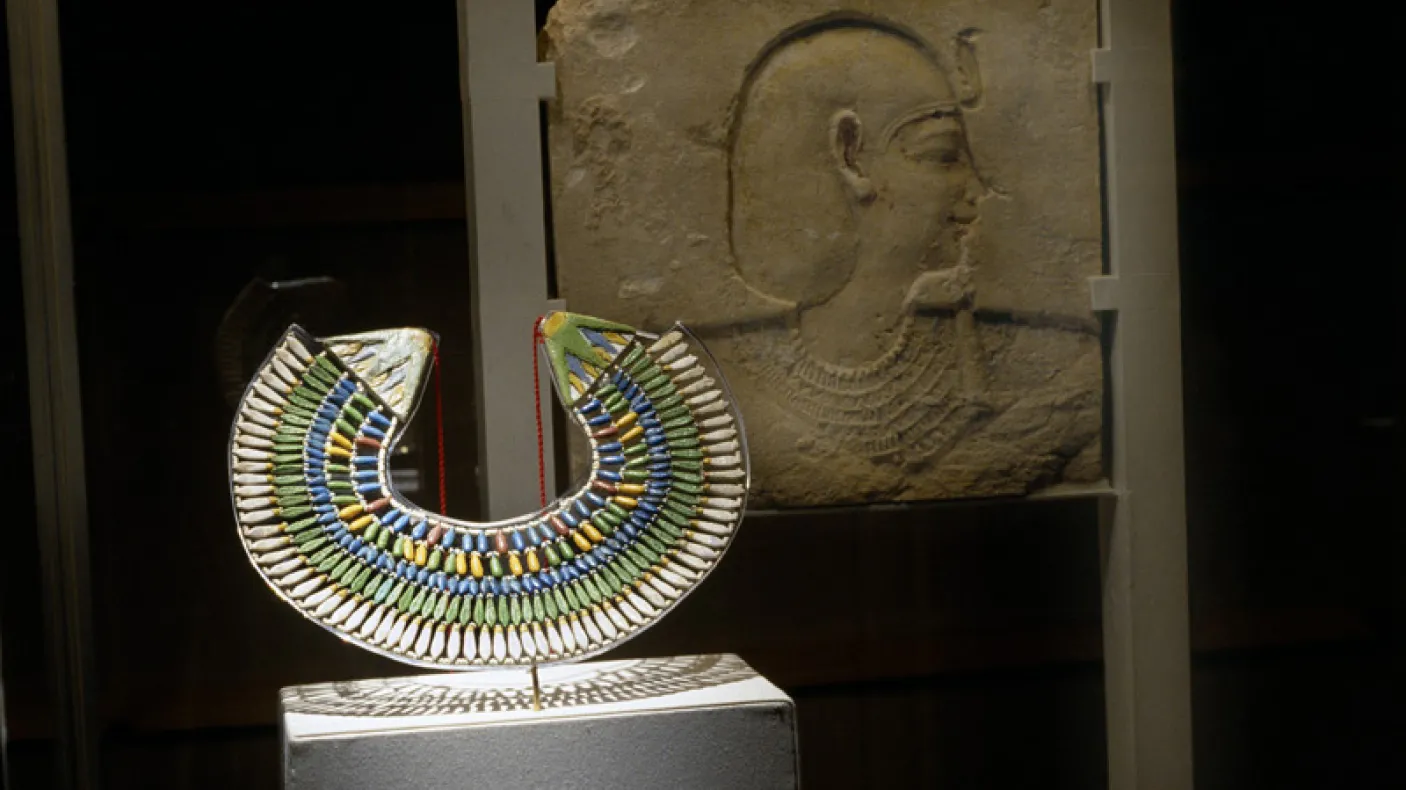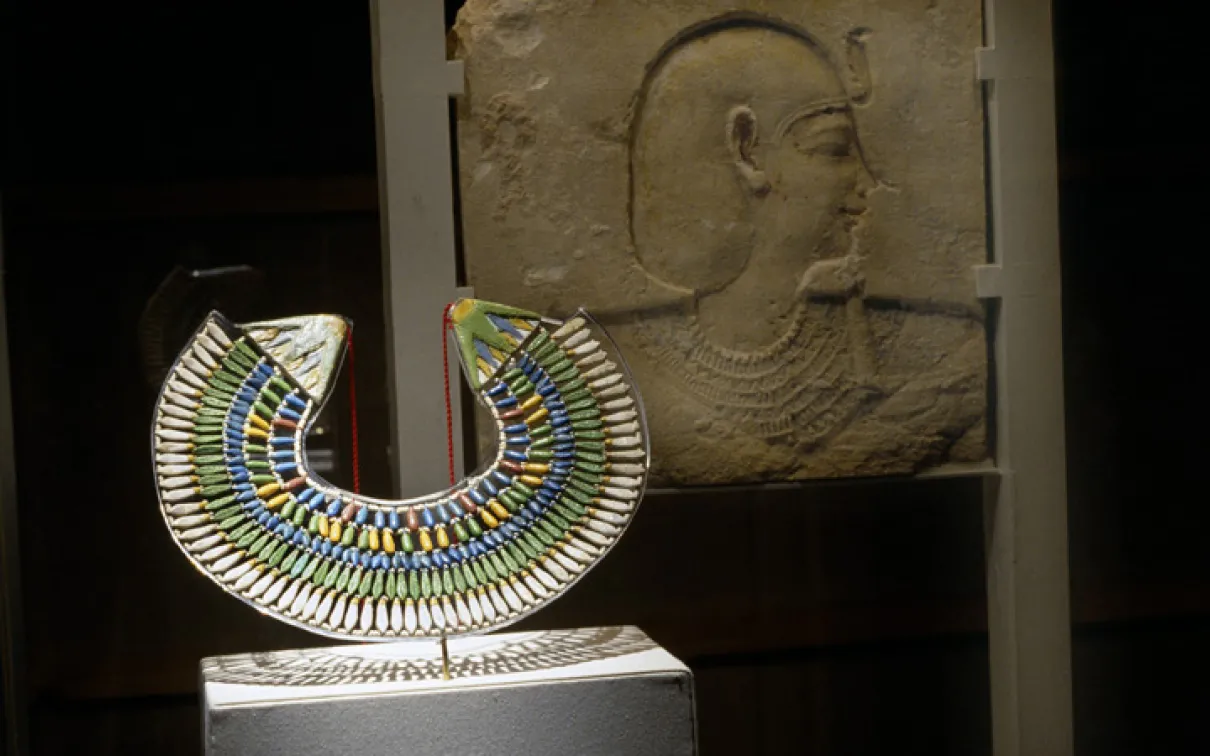Amarna Artifacts in the ROM’s Ancient Egypt Collection
Published
Categories
Author
Blog Post
By Laura Ranieri
If you go up to the Museum’s third floor and make your way into the Ancient Egypt displays, you will quickly find yourself amid an impressive collection of objects dating from the Old Kingdom through to Ptolemaic times. This is just a representative sampling of the more than 30,000 Egyptian artifacts in the Museum’s collection, from famous mummies and coffins to magnificent jewellery, bas reliefs, pottery vessels, superb burial objects and statuary.
There is also a small but notable collection of objects from the dramatic Amarna period during the New Kingdom. Amarna, of course, was the focus of the special lecture at the ROM on September 19 by Barry Kemp CBE, director of the Amarna Project, so it is worth a look. You’ll immediately be struck by the unique nature of the art from these times with its vibrant colour, flowing lines, elongated features and sense of vitality and movement. Within the Amarna collection there is, for example, a remarkable relief of grapes and flowers, an intriguing limestone fragment of Akhenaten and Nefertiti worshipping the Aten with Nefertiti’s face in profile, a relief of a young boy carrying provisions, among many others. Most notably, you can find an exquisite Amarna-era broad collar on view in the Egyptian jewellery collection. Could it have been worn by one of Akhenaten’s daughters? Or by Nefertiti herself? You may wonder where these Amarna artifacts actually came from. And how they got to the ROM in the first place. The answer is somewhat complicated.

It began, of course, with ROM founder Charles Trick Currelly and his love of Egypt. On a trip to the British Museum in the years after he completed his Masters degree in Toronto, he met the famous Egyptologist Sir William Flinders Petrie, one of the very first to thoroughly excavate at Amarna, notably at the Great Temple of Aten (where Barry Kemp is focusing his efforts today). In 1902, Petrie offered Currelly his first real job, an assistantship, and soon Currelly was living in Petrie’s home, learning how to pack artifacts and supporting Petrie’s work with the Egypt Exploration Fund. From that beginning, Currelly eventually was responsible for a dig in Egypt where he discovered the cenotaph and tomb of Ahmose I. It was out of these early experiences working for the foremost Amarna expert of the time that Currelly honed his skills in Egyptology and collecting – and planted the seeds for what would become the origins of the Royal Ontario Museum in 1914.

By far, the majority of the objects in the ROM’s Amarna collection had come through the Egypt Exploration Society (which had been the Egypt Exploration Fund for which Currelly had worked). The EES had an important expedition in Amarna in the 1920s.
“Some of the earliest work in the Great Aten temple was actually undertaken by Howard Carter working for Lord Amherst, but under the general supervision of Petrie,” notes Barry Kemp. “All of this material was sold at auction in the 1920s.”
According to Kemp, the EES (for which Kemp today is now a director) worked in Amarna in 1926, 1932 and 1933. As a contributor to the EES, the ROM received a share of the finds, likely a number objects from the 1932 season, including stone blocks (limestone and sandstone) showing fragments of wall decoration.
The concept of finds “in situ” is almost non-existent when it comes to Amarna due to the entire dismantling of the kingdom in antiquity. Some of the artifacts in the collection are believed to come from the court of Akhenaten’s Great Palace, others were found across the river in Hermopolis, where stones were transported and re-used after Akhenaten’s kingdom was destroyed in the decades following his death.
There is one notable exception to all this. The wonderful Amarna broad collar in our jewellery collection is known to have been acquired by Currelly in 1909 in the days when he was still working with Petrie. We may not know where exactly it was found or who originally wore it – but we do know it was among the first objects in the ROM. As such, that splendid Amarna necklace would be one of the landmark pieces of the collection – and one of the earliest artifacts acquired prior to the ROM’s formal establishment in 1914.


